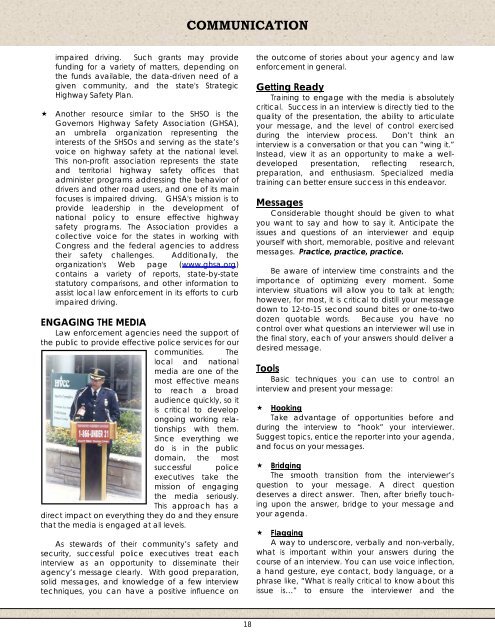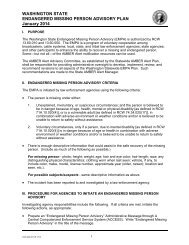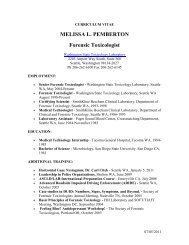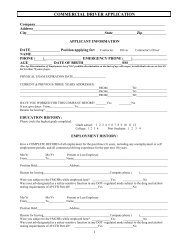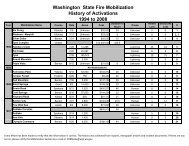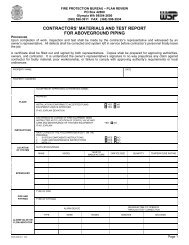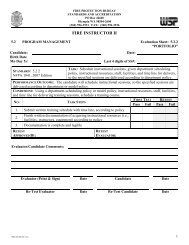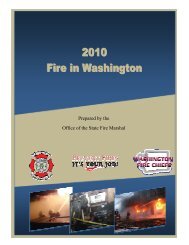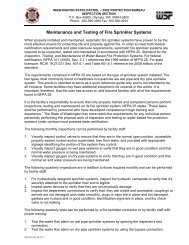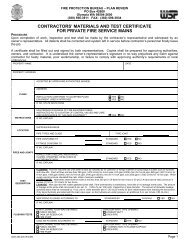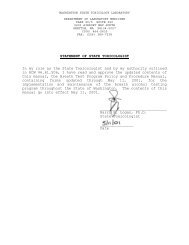Impaired Driving Subcommittee Impaired Driving Guidebook - NHTSA
Impaired Driving Subcommittee Impaired Driving Guidebook - NHTSA
Impaired Driving Subcommittee Impaired Driving Guidebook - NHTSA
You also want an ePaper? Increase the reach of your titles
YUMPU automatically turns print PDFs into web optimized ePapers that Google loves.
COMMUNICATIONimpaired driving. Such grants may providefunding for a variety of matters, depending onthe funds available, the data-driven need of agiven community, and the state's StrategicHighway Safety Plan. Another resource similar to the SHSO is theGovernors Highway Safety Association (GHSA),an umbrella organization representing theinterests of the SHSOs and serving as the state’svoice on highway safety at the national level.This non-profit association represents the stateand territorial highway safety offices thatadminister programs addressing the behavior ofdrivers and other road users, and one of its mainfocuses is impaired driving. GHSA's mission is toprovide leadership in the development ofnational policy to ensure effective highwaysafety programs. The Association provides acollective voice for the states in working withCongress and the federal agencies to addresstheir safety challenges. Additionally, theorganization's Web page (www.ghsa.org)contains a variety of reports, state-by-statestatutory comparisons, and other information toassist local law enforcement in its efforts to curbimpaired driving.ENGAGING THE MEDIALaw enforcement agencies need the support ofthe public to provide effective police services for ourcommunities. Thelocal and nationalmedia are one of themost effective meansto reach a broadaudience quickly, so itis critical to developongoing working relationshipswith them.Since everything wedo is in the publicdomain, the mostsuccessful policeexecutives take themission of engagingthe media seriously.This approach has adirect impact on everything they do and they ensurethat the media is engaged at all levels.As stewards of their community’s safety andsecurity, successful police executives treat eachinterview as an opportunity to disseminate theiragency’s message clearly. With good preparation,solid messages, and knowledge of a few interviewtechniques, you can have a positive influence onthe outcome of stories about your agency and lawenforcement in general.Getting ReadyTraining to engage with the media is absolutelycritical. Success in an interview is directly tied to thequality of the presentation, the ability to articulateyour message, and the level of control exercisedduring the interview process. Don’t think aninterview is a conversation or that you can “wing it.”Instead, view it as an opportunity to make a welldevelopedpresentation, reflecting research,preparation, and enthusiasm. Specialized mediatraining can better ensure success in this endeavor.MessagesConsiderable thought should be given to whatyou want to say and how to say it. Anticipate theissues and questions of an interviewer and equipyourself with short, memorable, positive and relevantmessages. Practice, practice, practice.Be aware of interview time constraints and theimportance of optimizing every moment. Someinterview situations will allow you to talk at length;however, for most, it is critical to distill your messagedown to 12-to-15 second sound bites or one-to-twodozen quotable words. Because you have nocontrol over what questions an interviewer will use inthe final story, each of your answers should deliver adesired message.ToolsBasic techniques you can use to control aninterview and present your message: HookingTake advantage of opportunities before andduring the interview to “hook” your interviewer.Suggest topics, entice the reporter into your agenda,and focus on your messages. BridgingThe smooth transition from the interviewer’squestion to your message. A direct questiondeserves a direct answer. Then, after briefly touchingupon the answer, bridge to your message andyour agenda. FlaggingA way to underscore, verbally and non-verbally,what is important within your answers during thecourse of an interview. You can use voice inflection,a hand gesture, eye contact, body language, or aphrase like, “What is really critical to know about thisissue is…” to ensure the interviewer and the18


